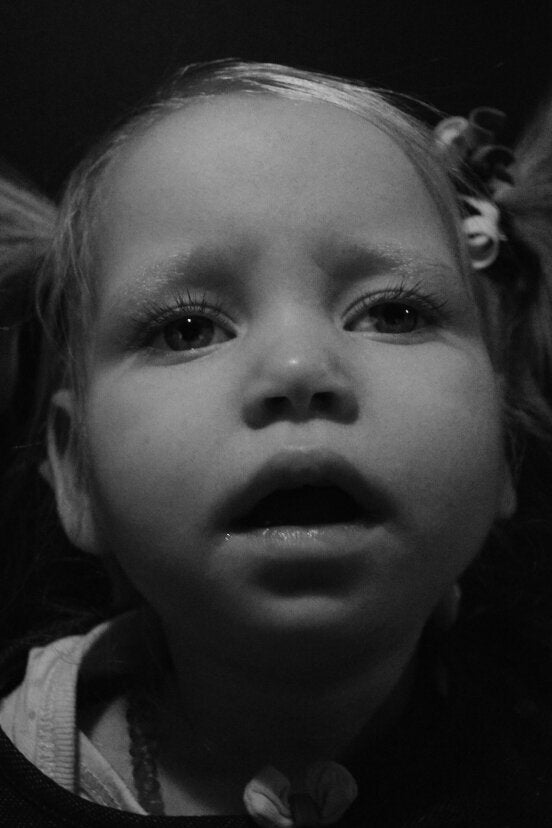
Charlotte Figi was still a baby when she experienced her first grand mal seizure. By the time Charlotte turned two, she was taking seven different medications to combat the frequency and severity of her convulsions. In an attempt to curb her epilepsy, she was prescribed heavy and addictive barbiturates which had harsh side effects for adult patients, let alone a toddler.
To her parents' dismay, the medications only offered a temporary solution. The seizures always returned with a vengeance, no matter how many pills Charlotte took. It would transpire that Charlotte had developed Dravet Syndrome, a debilitating form of epilepsy.
At age five, Charlotte's parents had tried every treatment available to them. But she was still experiencing brutal seizures, sometimes every 30 minutes. At the peak of Charlotte's battle with Dravets, she experienced up to three hundred grand mal seizures every week.
Confined to a wheelchair, Charlotte had lost the ability to walk, talk, or even eat. Her heart had stopped three times. Charlotte was experiencing such intense pain and suffering that her parents signed a Do Not Resuscitate form. As Charlotte began to starve from not being able to consume food, it seemed inevitable that Dravet Syndrome would claim Charlotte's young life very soon.
With nothing left to lose, Charlotte's dad began to research experimental treatments for Dravet Syndrome. He found one case in California, where medicinal marijuana helped to curb violent seizures in a young patient.
With all other options exhausted, her parents applied for a medical marijuana card. Charlotte was the youngest patient to ever apply. Most doctors rejected the request straight away, despite the fact Charlotte was close to death. Eventually one doctor agreed to grant the request in a last ditch attempt to save Charlotte's life.
A few hours after orally ingesting a small amount of cannabis oil, something miraculous happened. Charlotte's seizures stopped. Her parents were astonished. To their amazement, Charlotte didn't have a seizure for seven days. But at $800 out-of-pocket for two ounces, it was an expensive option that was not covered by health insurance. Luckily for Charlotte, two local growers stepped in. They decided to grow a strain of medical marijuana for Charlotte, called Charlotte's Web.
Charlotte's Web had trace amounts of THC, the property that gets you "high," but concentrated amounts of CBD -- cannabidiol. It's CBD which can help treat conditions like Dravet Syndrome. Charlotte's Web has no recreational value, but remains an illegal substance in many states. The local growers, the Stanley brothers, now have a charity called The Realm Of Caring. They offer treatment to patients who don't have the financial means for medical marijuana.
A small amount of cannabis oil in two meals almost eliminated Charlotte's seizures. Soon she only experienced two or three seizures a month. She regained the ability to walk, talk and eat. Without medical marijuana, Charlotte would have died.
Charlotte's case isn't unique. Multiple studies have indicated that marijuana has medicinal properties. Cannabis can treat ailments ranging from cancer to PTSD. For those who suffer from the side effects of heavy medication, medical cannabis is a highly sought after alternative.
Parents have faced jail sentences for trying to treat their sick children with cannabis. A surge of medical marijuana refugees have uprooted and moved to Colorado, just to receive medical treatment banned in their home state.
So, why does health insurance still snub medical marijuana?
How Marijuana Got A Bad Rap
The term "medical marijuana" has become a political football in recent years. Marijuana is still stigmatized by its association with stoners and drug culture. But often politicians ignore how marijuana got a bad reputation -- and who was responsible.
Marijuana's bad rap has dark roots in racism. Harry J. Anslinger was one of the first men to declare war on cannabis. In the 1930s, Anslinger served as a commissioner for the Federal Bureau of Narcotics. He sought to make marijuana illegal based on his own prejudice.
"Reefer makes darkies think they're as good as white men," said Anslinger.
At the time, marijuana had strong associations with the African-American jazz community. By attacking marijuana, it gave white supremacists an opportunity to attack racial minorities.
Anslinger found an ally in newspaper tycoon William Randolph Hearst. Hearst, who had investments in the timber industry, felt threatened by rival hemp production. Hearst was also a vocal racist who despised Mexicans.
To combat hemp production and promote his racist agenda, Hearst launched a widespread propaganda campaign across his many newspapers. Sensational (and false) stories linked marijuana to violent crimes, committed by racial minorities. In later years, Hearst would be called the father of Yellow Journalism -- deliberately concocting misleading stories that were positioned to incite a moral panic, but were devoid entirely of facts.
In 1937, Anslinger came to Congress armed with Hearst's newspaper clippings. The stories were false, yet Anslinger promoted them as evidence. The only man who stood up to Anslinger in Congress was, in fact, a doctor.
Dr. William C. Woodward, from the American Medical Association, slammed Anslinger's wild accusations. He argued that Anslinger had not provided any evidence to support his claims.
But the fear and racial hatred stirred up by Hearst and Anslinger overpowered the need for evidence, which is how marijuana became illegal in 1937. Thanks to Hearst and Anslinger, the police could round up all the users of marijuana (primarily African-Americans and Latinos) and throw them in jail. To this day, 3,278 prisoners are serving life sentences without parole for non-violent offenses, many of which involved marijuana. 65 per cent of them are black.
"The issue of medical marijuana has never been about science, nor healthcare. It's about politics and money."
Why It's Still Illegal
Overwhelming research indicates that marijuana can assist with various medical conditions. It's non-addictive, and has less side effects than a glass of wine. It's also easy to produce, thus making it an affordable alternative to expensive prescriptions. While some states continue to take a lenient stance on drunk driving, which kills one person every 51 minutes, most states crack down hard on marijuana possession -- even for medical purposes.
Yet, it's still tarnished by the slanderous accusations of Hearst and Angslinger, preventing many Americans from receiving medical treatment. It doesn't make sense, until you investigate the corporate motivations behind recent anti-legalization advocates. Some of the most powerful opponents of marijuana legalization are alcohol and pharmaceutical companies. They stand to lose a lot of money should marijuana gain legal status. In 2010, California Beer and Beverage Distributors funneled $10,000 into Public Safety First, an organization which opposes the legalization of marijuana.
But the real sugar daddy behind anti-legalization lobbyists are the Corrections Corporations of America. They spend nearly $1 million each year on anti-legalization efforts. Corrections Corporations of America is a private, for-profit company. They make billions of dollars managing prisons. The higher the demand for prison beds, the more money they make. They even stated in an official report: "Any changes with respect to drugs and controlled substances or illegal immigration could affect the number of persons arrested, convicted, and sentenced, thereby potentially reducing demand for correctional facilities to house them."
Needless to say, these powerful corporations have a lot of sway in Washington. While marijuana remains illegal in some states, insurance companies just won't cover it.
The FDA
The biggest roadblock standing between health insurance and medical marijuana is the FDA. Insurance companies won't cover medical marijuana, even in states where it's legal, without FDA approval.
The FDA initially acknowledged that marijuana could be beneficial for some conditions. They later retracted that statement. The FDA later said that marijuana was dangerous and had no medicinal value. They implied that new research had been conducted to make these conclusions, yet no such research ever existed. Extensive research, conducted by the impartial Institute of Medicine, came to different conclusions.
In 1999, the Institute of Medicine did an extensive study on medical marijuana. They concluded that the reported harmful side effects had been greatly exaggerated. Their research indicated that medical marijuana had positive results in patients suffering from cancer, HIV, multiple sclerosis and spinal cord injuries. Based on these findings, they called for more studies to take place, yet the government would continue to block research in the field of medical marijuana for years to come.
The FDA has been accused time and time again of putting corporate interests before public ones. The FDA accused marijuana of being dangerous, but the FDA has approved ingredients like Erythrosine, a red food coloring. Erythrosine has caused cancer in animals. Although it's banned in cosmetics, it's still an active ingredient in food products.
Sulfites that can cause asthma attacks are still found in fresh produce, which the FDA has deemed safe. The FDA has also approved of trace amounts of insects, rat hair, maggots and cigarette butts in your food.
Unfortunately the issue of medical marijuana has never been about science, nor healthcare. It's about politics and money.
Until medical marijuana has been cleared by the FDA, it won't be covered by health insurance agencies. And with powerful lobbyists pulling the strings in Washington, it's unknown when that will change.
MORE ON HUFFPOST:
